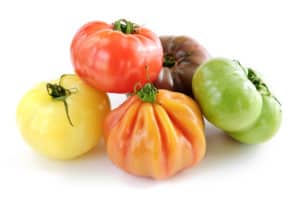Carrots, with their vibrant color and sweet, earthy flavor, are a beloved addition to many meals. But how do you grow these crunchy delights in Colorado, a state known for its challenging climate and diverse geography? In this comprehensive guide, we will unravel the secrets to successfully cultivating carrots in the Centennial State. From choosing the right carrot varieties to preparing the soil, planting, managing pests and diseases, and harvesting your bounty, we’ve got you covered. Let’s embark on this journey to discover the joys of growing carrots in the heart of the Rockies.
Contents
Choosing the Right Carrot Variety
Selecting the right carrot variety is the first step towards a successful harvest in Colorado’s unique climate. Consider these factors when making your choice:
- Shorter Growing Seasons: In Colorado’s variable climate, opt for quicker-maturing carrot varieties like ‘Nantes’ or ‘Babette.’ These varieties are more likely to reach maturity before the first frost.
- Soil Compatibility: Pay attention to your soil type when selecting carrot varieties. ‘Danvers’ carrots, for example, are well-suited to Colorado’s loamy soils, while ‘Scarlet Nantes’ adapt well to various soil types.
- Temperature Tolerance: Carrot varieties like ‘Kaleidoscope’ and ‘Purple Haze’ can handle temperature fluctuations in Colorado, making them suitable choices.
Preparing the Soil
Colorado’s soil composition can vary significantly by region, so it’s essential to tailor your soil preparation to your specific location. Here are some general tips:
- Soil pH: Carrots prefer slightly acidic to neutral soil with a pH range of 6.0 to 7.0. Test your soil’s pH and adjust it as needed with lime or sulfur.
- Loose and Well-Draining: Ensure your soil is well-draining and loose to accommodate carrot growth. Consider raised beds or containers if your native soil is heavy clay.
- Amending the Soil: Enhance soil fertility and structure by incorporating organic matter such as compost or well-rotted manure. This provides essential nutrients and improves moisture retention.
Planting and Care
Proper planting and care are essential to overcome Colorado’s climatic challenges:
- Planting Depth and Spacing: Plant carrot seeds about a quarter to a half-inch deep in rows, leaving approximately two inches between each seed. Adequate spacing prevents overcrowding and misshapen carrots.
- Timing: In Colorado, timing is crucial. Plant carrots in early spring as soon as the soil can be worked or in late summer for a fall harvest.
- Watering: Carrots need consistent moisture, so use drip irrigation or soaker hoses to keep the soil evenly moist. Avoid overhead watering, which can lead to foliage diseases.
- Mulching: Apply a layer of organic mulch to help retain soil moisture, regulate temperature, and suppress weed growth. This is particularly useful in Colorado’s variable climate.
Dealing with Pests and Diseases
Colorado’s climate can attract various pests and diseases that affect carrot plants. Here’s how to manage them organically:
- Common Pests: Keep an eye out for pests like aphids, wireworms, and carrot rust flies. Introduce beneficial insects like ladybugs to help control aphids.
- Disease Prevention: To prevent diseases, practice crop rotation and avoid planting carrots in the same location each season. This disrupts the life cycle of pests and diseases without the need for chemicals.
Harvesting and Storing
Knowing when and how to harvest carrots is essential to enjoy the fruits of your labor:
- Maturity Signs: Carrots are typically ready for harvest when they reach their desired size, usually around 1 inch in diameter. Gently pull them from the soil, taking care not to damage the roots.
- Harvesting Technique: Use a garden fork or trowel to loosen the soil around the carrot before gently pulling it out. This prevents damage to the roots and ensures your harvest is in pristine condition.
- Storage: Store your harvested carrots in a cool, dark place with high humidity, like a root cellar or refrigerator. Properly stored, your Colorado-grown carrots can stay fresh for several months.
Conclusion
Growing carrots in Colorado may pose some challenges, but with the right knowledge and techniques, you can enjoy a bountiful harvest of these delicious root vegetables. By choosing the right carrot variety, preparing the soil, timing your planting, and implementing proper care and pest management strategies, you can savor the sweet success of growing carrots amidst the breathtaking landscapes of the Rocky Mountains. So, roll up your sleeves, embrace the adventure, and get ready to savor the taste of your own homegrown Colorado carrots. Your garden will thrive, and your taste buds will thank you.



